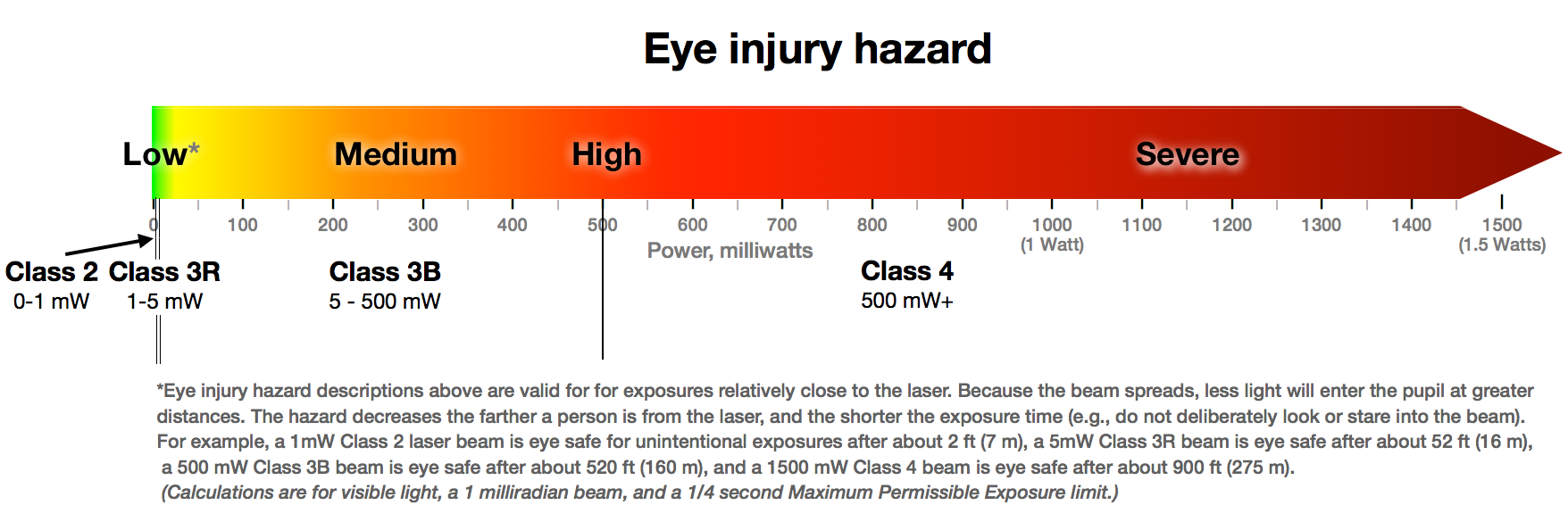
High Power Laser | Burning Laser Pointers | Green Laser Pointer

Home > Blog > About Laser Classes
Lasers are classified for safety purposes based on their potential for causing injury to humans’eyes and skin.
Most laser products are required by law to have a label listing the Class. It will be listed either in Arabic numerals (1 2, 3A, 3B, 4) or in Roman numerals (I, II, IIIA, IIIB, IV).
Class 1 lasers are very low risk and "safe under reasonably foreseeable use", including the use of optical instruments for intrabeam viewing. lasers have wavelengths between 302.5 nm and 4000 nm, and are safe except when used with optical aids (e.g. binoculars).
Class 2 lasers do not permit human access to exposure levels beyond the Class 2 for wavelengths between 400 nm and 700 nm. Any emissions outside this wavelength region must be below the Class 1. lasers have wavelengths between 400 nm and 700 nm, and are potentially hazardous when viewed with an optical instrument. Any emissions outside this wavelength region must be below the Class 1M.
Class 3A lasers range from 302.5 nm and 106 nm, and is potentially hazardous but the risk is lower than that of Class 3B green laser pointers. The accessible emission limit is within 5 times the Class 2 for wavelengths between 400 nm and 700 nm, and within 5 times the Class 1 AEL for wavelengths outside this region.
Class 3B lasers are normally hazardous under direct beam viewing conditions, but are normally safe when viewing diffuse reflections.
Class 4 lasers are hazardous under both intrabeam and diffuse reflection viewing conditions. They may cause also skin injuries and are potential fire hazards.
For visible-beam consumer lasers, there are four main classes. Each is described in more detail here: Class 2, Class 3A, Class 3B and Class 4. The first two Classes are relatively safe for eye exposure; the last two are hazardous. The chart below shows how the eye injury hazard increases as the laser’s power increases.

The detailed information given below is for laser light that is visible -- between 400 and 700 nanometers -- and for an unintentional exposure of less than 1/4 second. Consult other sources for classifications of infrared and ultraviolet lasers, or other visible green laser light exposure durations.
Laser Classes (visible light only, unintentional exposure <0.25 seconds)

See also next picture. This shows the distances at which various consumer lasers are eye, skin, and fire hazards, and are visual interference hazards: flashblindness, glare and distraction.

Related Information :
Class 2 (II) Laser Safety Information
Class 3A (IIIA) Laser Safety Information
Hot Tag
Copyright ©2019 everyonetobuy All Rights Reserved.